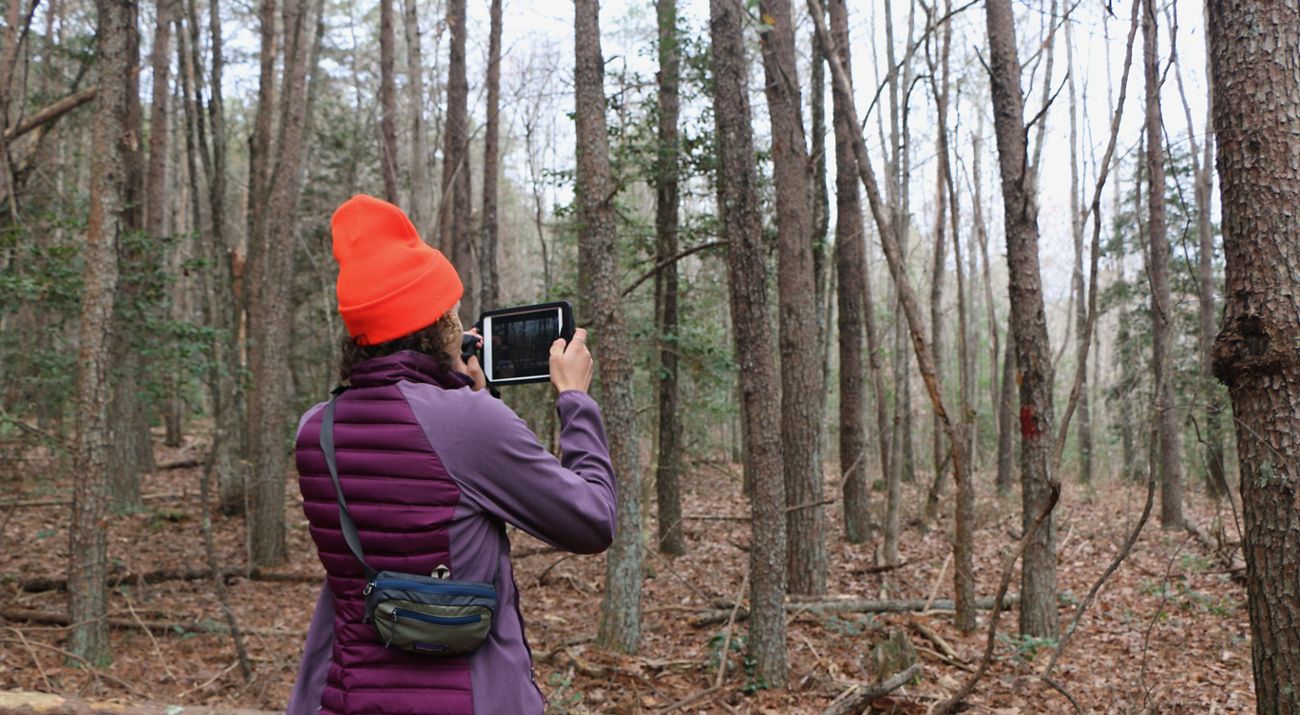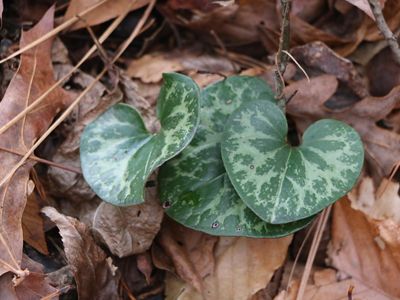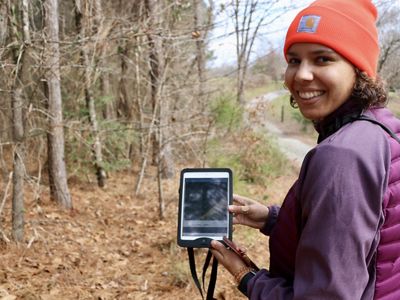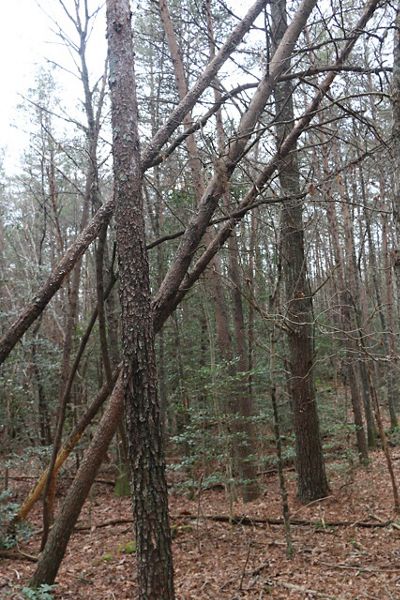
Monitoring Conservation Easements
Easements are a hallmark of TNC's work across North Carolina.
By Sydney Bezanson, Former Content Manager
Key Takeaway
In North Carolina, conservation easements are among The Nature Conservancy’s most powerful tools for land protection. Easements are agreements with landowners that restrict certain uses, and grant organizations like TNC certain management rights to private lands.
On a misty day in early December, Conservation Coordinator Lauren Goodman prepares for a day of easement monitoring. At this particular property in Catawba County, a 40-year-old stand of Virginia pine needs to be removed. Lauren pulls up a map of the property on a tablet that marks the location of the trees.
It is a trek through the forest to reach the stand. Along the way, I notice a small heart-shaped plant. Its green color is hard to miss against a floor of leaf litter. “That’s called little heartleaf,” Lauren says, “we look for that, too. So I’ll mark it on the map when we find a few plants together.”

How Does a Property Get Protected by a Conservation Easement?
For properties being considered as potential easements, there are certain qualifications to meet. A landowner comes forward with the intention of putting an easement on their land. Then, someone visits the property to do an assessment to see if there is any ecological value. The likelihood for development around the area is also a factor in determining eligibility.
If the property meets these requirements, the landowner receives certain benefits. Conservation easements have tax incentives. If there is not ecological value, the landowner still has the option to donate the property, which TNC can use as trade lands for acquiring other tracts of value.


Managing and Monitoring Easements
When Lauren and I reach the pine stand, we notice several downed trees from a recent storm. “The trees don’t really belong in this area. They can be replaced with a better species.” Lauren notes. As part of the forest plan, this section is designated for removal. At the end of our visit, we meet briefly with the landowner to discuss management of the property.
TNC holds 66 conservation easements in North Carolina, and over 29,335 acres of easement property is monitored by our staff. Landowners are crucial partners to achieve landscape-scale protection. And as development presents new challenges for conservation, easements continue to be an important tool for conservation practitioners across the state.
Notable Conservation Easements






